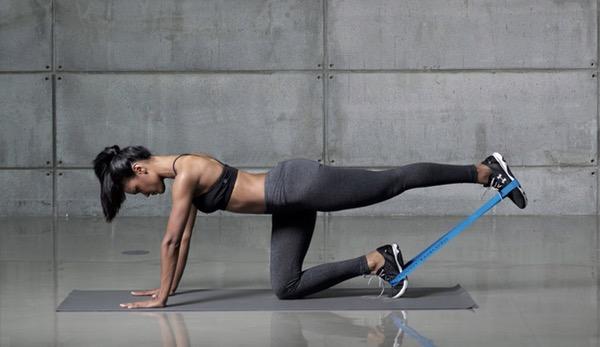Tennis
wecarelife: Fit with mini band
Maybe you’ve seen this little, incredibly effective band somewhere: It looks like a Thera band, but it doesn’t have two ends, it’s a loop. The miniband looks very inconspicuous, but this first impression is deceptive. Depending on the strength used (there are usually three to five degrees of strength, depending on the manufacturer) the training resistance is light to very heavy and can feel pretty mean.
Due to the different resistance levels, the small band is suitable for beginners as well as for advanced users. Quite apart from the fact that it is incredibly practical due to its small size and weight as well as its easy handling, whether it is for storage at home or in the fitness bag. Even for Nordic Walking or running, it can be easily carried in your pocket or jacket pocket and unpacked outdoors for a few exercises.
A miniband offers many different applications. It can be used for endurance and strengthening exercises as well as for mobilization or stretching exercises. Exactly for this reason it is also used in physiotherapy and rehabilitation.
To give you a better idea, here are a few examples of how to use the miniband for your training:
Warming up: To get warm, a light miniband with little resistance, worn on hands or feet, can be used. Holding it with both hands, the tape resistor can be used, for example, to use the tape resistance in order to alternately box the speaker diagonally forward with the left and right and to make this speaker more intense through the tape.
Placed at the feet just above the hocks, it can be tripped on the spot with slightly bent knees and the upper body tilted forward. The trippling happens on the forefoot, the arms move sideways like sprinting. But also for simple exercises such as the jumping jumper, the mini-band provides a pleasant resistance if it is stretched just above the ankle joints and creates further training stimuli every time the legs are opened and closed.
Strengthening: Lateral steps with slightly bent knees (side steps) are among the absolute mini-band classics. Here, too, the ligament is placed just above the ankle joints. If you would like even more resistance, place another miniband just above your knees. Stand with your hips wide, the band slightly on tension, your hands remain on your hips, both tips of the feet look forward, your knees slightly flexed, your back is straight.
Now stitch eight large steps sideways to the right, the left leg closes each step in a controlled manner. Don’t spare yourself, look for the resistance of the ligament, but always keep both toe tips straight. After eight steps, change direction and step back to the left. This exercise strengthens v. a. the leg and gluteal muscles and is also very well suited to work on a straight pelvic-leg axis in order to achieve an X leg or leg extension. prevent the knee from buckling when walking or running by strengthening the stabilising muscles.
Hull stabilization training (core): The mini-band can also be optimally installed for underarm and lateral support exercises: either with the forearm support on the hands or in the lateral support on the feet above the ankle joints. Here, the band can be held statically permanently on tension during the supporting exercise or it can be used dynamically by opening the legs (lifting the upper leg) and closing (do not lay down the upper leg completely).
Shoulder exercises, hip rotation exercises and many more are also possible with the miniband in a simple form. There are almost no limits to the variety of exercises.
If you like it now, get your own miniband set and try it out. Sources of supply, book and exercise tips can be found in the links below. We wish you a lot of fun training!













You must be logged in to post a comment Login